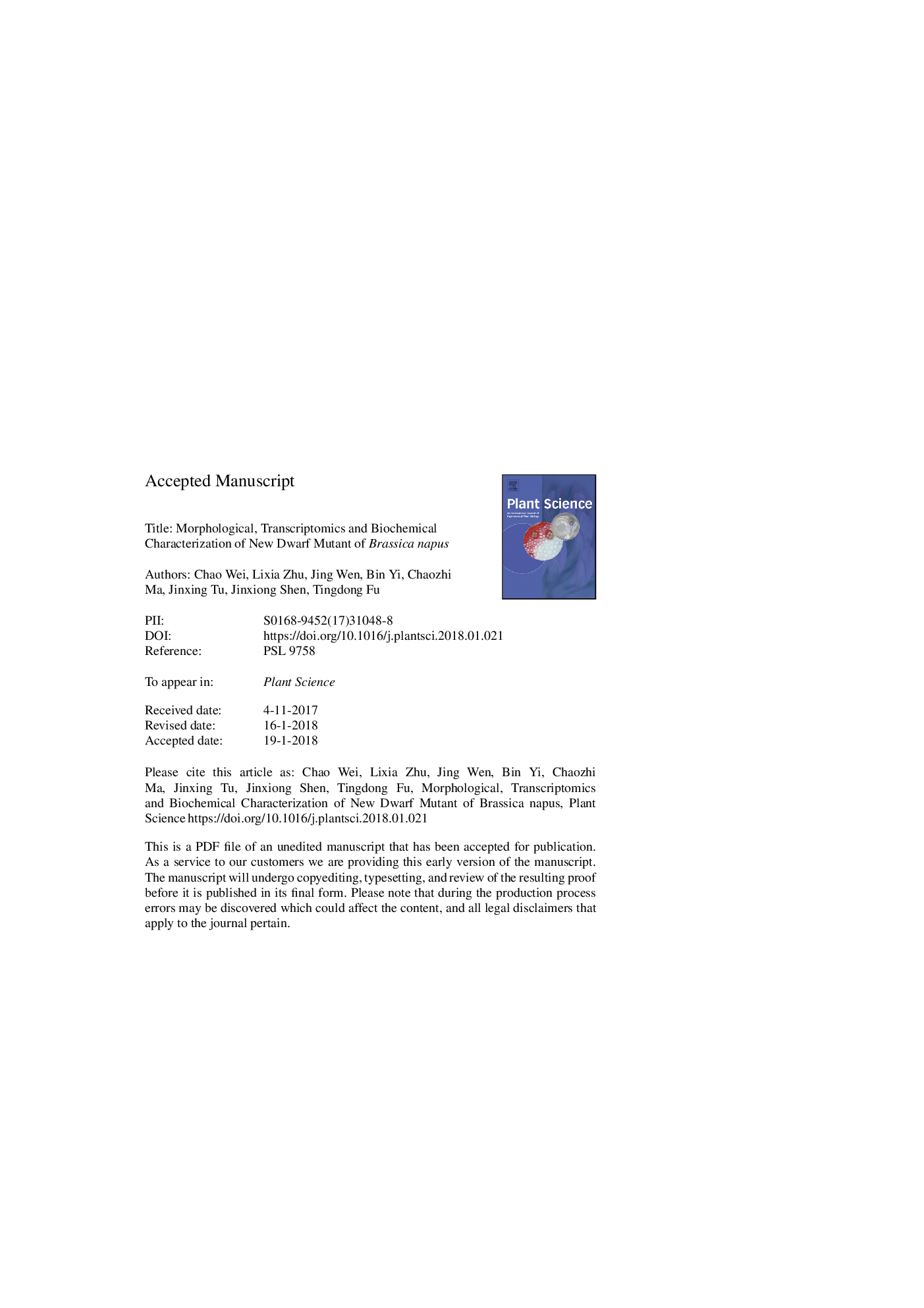| Article ID | Journal | Published Year | Pages | File Type |
|---|---|---|---|---|
| 8356616 | Plant Science | 2018 | 39 Pages |
Abstract
Plant height is a key trait of plant architecture, and is responsible for both yield and lodging resistance in Brassica napus. A dwarf mutant line (bnaC.dwf) was obtained by chemical mutagenesis of an inbred line T6. However, the molecular mechanisms and changed biological processes of the dwarf mutant remain to be determined. In this study, a comparative transcriptome analysis between bnaC.dwf and T6 plants was performed to identify genome-wide differentially expressed genes (DEGs) and possible biological processes that may explain the phenotype variations in bnaC.dwf. As a result of this analysis, 60,134,746-60,301,384 clean reads were aligned to 60,074 genes in the B. napus genome, and accounted for 60.03% of the annotated genes. In total, 819 differentially expressed genes were used for GO (Gene Ontology) term and KEGG (Kyoto Encyclopedia of Genes and Genomes) pathway enrichment analyses with a FDR (false discovery rate) criterion of <0.001, |log2Ratio|â¯â¥â¯1. We focused on plant hormone signal transduction pathways, plant-pathogen interaction pathway, protein phosphorylation and degradation pathways and sugar metabolism pathways. Taken together, the decrease in local auxin (IAA) levels, the variation in BnTCH4, BnKAN1, BnERF109, COI1-JAZ9-MYC2, auxin response genes (BnGH3.11, BnSAUR78, and AUX/IAA19), and ABA (abscisic acid) signaling genes (BnADP5, BnSnRK2.1, BnABF3.1) partially accounted for variations of cell proliferation in internodes, shoot and root apical meristem maintenance, abiotic and biotic stress resistance, and pre-harvest sprouting. As a comprehensive consequence of the cross-talk between plant hormones, sugar metabolism, plant-pathogen interactions and protein metabolism, bnaC.dwf presents distinct phenotypes from T6. These results will be helpful for shedding light on molecular mechanisms in the dwarf mutant, and give insight into further molecular breeding of semi-dwarf B. napus.
Related Topics
Life Sciences
Agricultural and Biological Sciences
Plant Science
Authors
Chao Wei, Lixia Zhu, Jing Wen, Bin Yi, Chaozhi Ma, Jinxing Tu, Jinxiong Shen, Tingdong Fu,
